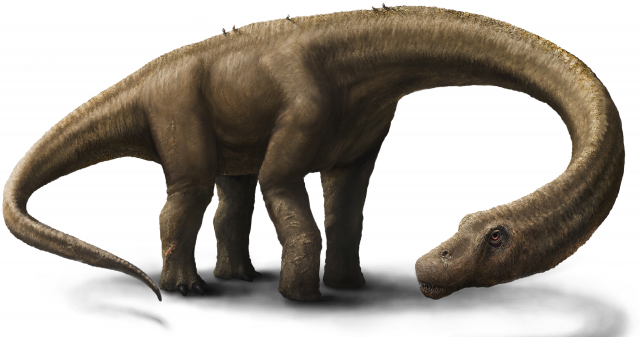Meet Dreadnoughtus, the 65-ton dinosaur
Ars Technica » Scientific Method 2014-09-04

Some species of dinosaur were astonishingly enormous compared to anything alive on land today, which becomes obvious the moment you stand in the shadow of their skeletons in a museum. This is a key reason why we remain fascinated with these long-extinct beasts. The colossal size of the long-necked species like Brachiosaurus stretches the limits of our imaginations and exhausts our vocabulary. And nothing quite gets the hyperbole flowing like the discovery of a gigantic new dinosaur.
So meet Dreadnoughtus, the 65-ton, 26-meter-long plant-eating behemoth from the latest Cretaceous—84 to 66 million years ago—found in Argentina. It is named after the World War I British battleship Dreadnought.
This discovery comes only a few months after another team of Argentine researchers reported a slightly older, and apparently even larger, long-necked dinosaur. That discovery dominated the science news for days, to the point where elderly relatives, who never took much of an interest in my career in science, were phoning me up to ask how something so huge could have possibly existed.
Read 9 remaining paragraphs | Comments